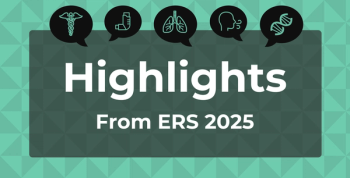
White House Proposes Deep Cuts to HHS in FY2026 Budget, Reducing NIH to 8 Centers
Key Takeaways
- The proposed budget reduces HHS discretionary funding by $31 billion, with a 40% cut for NIH, marking its lowest funding in decades.
- NIH restructuring consolidates 27 institutes into 8 new entities, aiming to create efficiencies and focus on "true science."
The proposed 2026 HHS budget slashes National Institutes of Health (NIH) funding by 40%, alarming health experts and threatening vital research and public health initiatives.
The White House has proposed a sweeping reorganization and funding reduction for HHS in its fiscal year 2026 budget request, prompting alarm among public health experts, researchers, and lawmakers across the political spectrum.1,2
A cornerstone of the proposal entails redirecting $14 billion toward a newly created agency—the Administration for a Healthy America—which will lead the Make America Healthy Again (MAHA) initiatives introduced by HHS Secretary Robert F. Kennedy Jr.1
The proposal, released late in the evening of May 30, calls for $94.7 billion in discretionary funding for HHS, a reduction of more than $31 billion compared with fiscal year 2025. Central to the proposed cuts is a dramatic 40% decrease in funding for the National Institutes of Health (NIH), from $47 billion to $29 billion.2 If enacted, the budget would mark the agency’s lowest funding level in decades, when adjusted for biomedical inflation.
From 27 to 8 National Institutes of Health
The updated budget slashes NIH discretionary funding by nearly $18 billion and outlines a major restructuring of the organization. Of the agency’s current institutes and centers, only 3 would remain intact: the National Cancer Institute, the National Institute of Allergy and Infectious Diseases, and the National Institute on Aging. The rest would be consolidated into 5 new entities in an effort the administration says will “create efficiencies” and allow NIH to focus on “true science.”
More specifically, the NIH’s current 27 institutes and centers would be consolidated into 8 new bodies, which would see reduced funding.1 New NIH bodies would include:
- National Institute on Body Systems, encompassing institutes focused on heart, lung, blood, arthritis, and diabetes
- National Institute on Neuroscience and Brain Research, combining research on neurological, eye, dental, and craniofacial disorders
- National Institute of General Medical Sciences, merging genome research, biomedical imaging, and other general medical work
- National Institute for Child and Women’s Health, Sensory Disorders, and Community, consolidating research on reproductive health and sensory conditions
- National Institute of Behavioral Health, combining institutes focused on mental health, substance use, and addiction
The CDC’s Division of Cancer Prevention and Control (DCPC) has delivered over 16 million screenings and funded more than 50 cancer registries, the American Cancer Society emphasized in a response to the announcement.3 Proposed cuts could significantly hinder progress in cancer research, prevention, and early detection.
“Registries also funded by the DCPC have helped us understand our progress against cancer, alerted us to concerning trends and helped policymakers direct resources as needed," the society
While presidential budget requests are not binding, they serve as a starting point for congressional negotiations and signal an administration’s policy priorities.
Russell Vought, director of the Office of Management and Budget, told CNN that "the NIH has been a bureaucracy that we believe has been weaponized against the American people,” and that the restructuring would refocus NIH’s mission and reduce unnecessary bureaucracy.1
Proposal Shifts 340B Oversight From HRSA to CMS
Despite the reorganization, current and former HHS employees described "AHA’s purview amounts to a grab bag of policy priorities that make little sense to tie together, or were functioning well previously," in a
According to the administration’s budget documents, relocating 340B oversight to CMS would “allow for streamlined processes and the ability to utilize in-house drug-pricing resources and expertise.” Still, the proposed transition may raise concerns among 340B hospitals and clinics, as CMS has previously supported policy shifts that could reduce reimbursements for 340B drugs and floated changes such as converting the program into a rebate model—an approach favored by drugmakers but opposed by many hospitals.
Under the proposal, CMS would receive $12 million to manage 340B, matching HRSA’s current budget for the program. However, CMS overall would see its budget reduced by $661 million in the coming year.
FDA May Face $400 Million in Cuts
The FDA would also face steep cuts, with its funding reduced by $409 million. Despite the reduction, the FDA would be tasked with stepping up inspections and enforcement around food and infant formula safety in line with the administration’s MAHA agenda.
With the proposal now in the hands of Congress, lawmakers will weigh the administration’s desire to realign public health spending with growing concerns from stakeholders who warn the cuts could stall decades of scientific progress and imperil the health of millions.
References
1. Pifer R. HHS releases more detailed 2026 budget disclosing scope of cuts. Healthcare Dive. June 2, 2025. Accessed June 4, 2025.
2. Choi J, O'Connel-Domenech A, Weixel N. White House asks for steep cuts to HHS budget. The Hill. June 2, 2025. Accessed June 4, 2025.
3. American Cancer Society Cancer Action Network. Future cancer cures in jeopardy as president proposes massive cuts to National Cancer Institute. News release. May 30, 2025.
Newsletter
Stay ahead of policy, cost, and value—subscribe to AJMC for expert insights at the intersection of clinical care and health economics.













































